How Perseverance’s Diverse Set of Cameras Will Perform Science on Mars
The latest rover has 23 cameras to help it navigate the surface of the red planet and perform scientific experiments.
A gentle breeze blowing at less than five kilometers an hour is the first sound that humanity has recorded from the surface of another planet. But the two microphones on NASA’s Mars Perseverance rover are a curiosity, a nice-to-have on a mission with far greater ambitions. The real excitement comes from Perseverance’s cameras.
The rover has 23 cameras. Nine of those are engineering cameras, which monitor the rover and its surroundings, helping determine where it’s going and if there are any hazards inon the way. Another seven cameras were for entry, descent and landing (EDL). These are the cameras that provided the stunning video of the rover’s descent to the surface of Mars, from launching its parachute to lowering itself to the ground with the “sky crane.”
The other seven cameras will perform the duties that Perseverance was built to do. These are the science cameras and include SHERLOC, WATSON, the SuperCam, PIXL, and Mastcam-Z. In the coming months, the superb pictures of the Martian landscape and scientific discoveries will come from these cameras.
Perseverance has a variety of instruments that introduce new kinds of science to Martian exploration. MOXIE will attempt to produce oxygen from Martian carbon dioxide. RIMFAX is a subsurface radar that will “provide centime-scale resolution of the geologic structure” of the Martian underground. MEDA is a set of sensors to analyze weather. The rover has an instrument to collect and cache soil samples that, hopefully, will one day be brought back to Earth for analysis. And, of course, there is the flying drone—Ingenuity—that will attempt flight on Mars for the first time.
Perseverance’s cameras are the backbone of everything it does. A closer examination of the rover’s cameras shows a sophisticated mix of equipment that will do everything from finding hazardous rocks in Perseverance’s path, to firing lasers at those very same rocks.
Entry, Descent and Landing
On February 22, NASA released the video of Perseverance’s entry into the Martian atmosphere and its descent to the ground. This period is often called the “seven minutes of terror” because of the time lag it takes for communication to return to Earth from Mars, leaving mission control to wonder if the really, really expensive robot has crashed and died on the slopes of Jezero Crater.
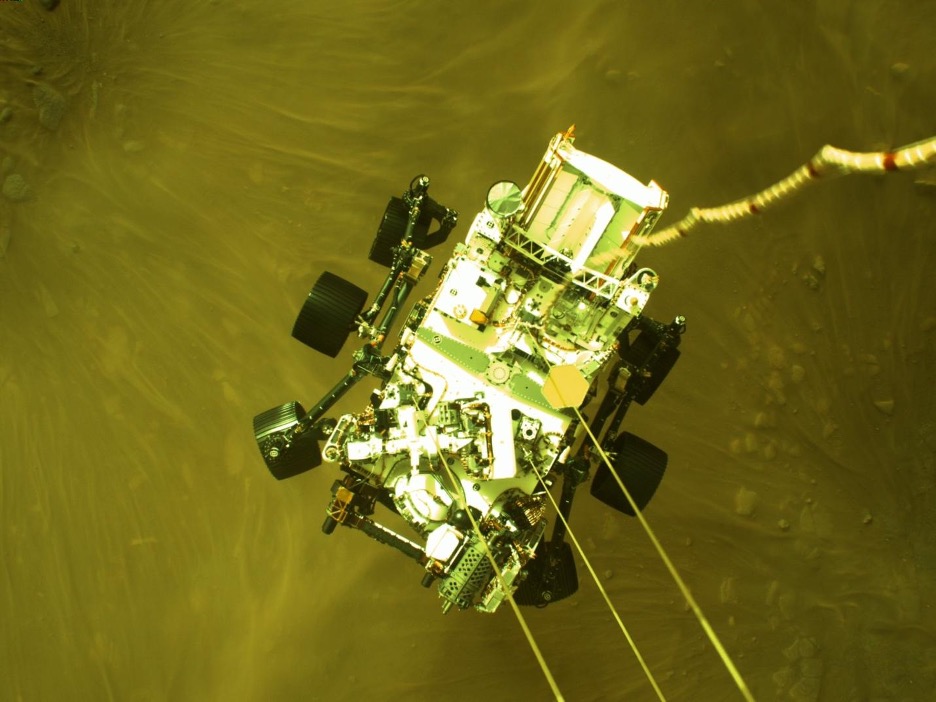
NASA has sent a variety of landers and rovers to Mars over the years. But it has never been able to witness the EDL stage of the operation. This time, the team equipped Perseverance with cameras that looked both up and down (along with the microphones, which ultimately didn’t capture any sound during the descent), to witness the deployment of the rover’s parachute as well as the final blast of its rockets as it gently touches the surface.
The EDL cameras include:
- Parachute Up-Look cameras (A and B)
- Descent Down-Look camera
- Rover Up-Look camera
- Rover Down-Look camera
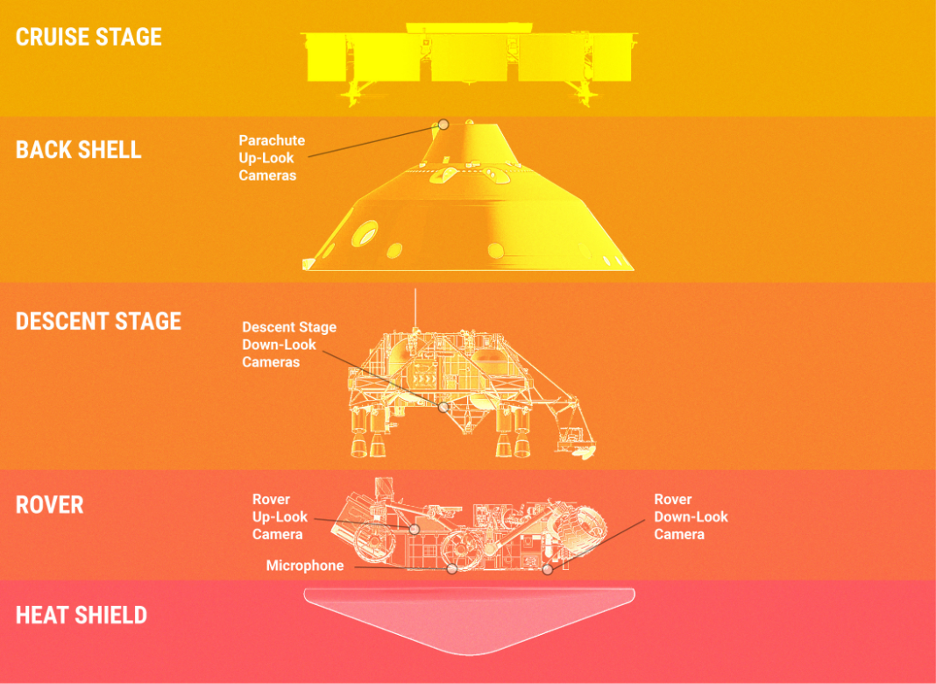
These cameras provide more than just an exciting video and a glimpse on a previously unseen process. Important science and engineering questions can be answered with the data provided by the EDL cameras. For instance, how much sand and rock was blown into the atmosphere when the retro rockets wereare fired as the rover touched down? How much does the landing system move as the rover nears the surface?
On Perseverance’s descent, the Parachute Up-Look camera showed two pieces unexpected (though not mission critical) pieces of EDL equipment separating when the parachute deployed.

While those pieces were ultimately unimportant to Perseverance’s landing, it’s an important bit of data for the engineers back home.
The Engineering Cameras Show Where to Go
NASA has learned a lot about how to move a robot around Mars. The Curiosity rover landed on the red planet in August 2012 and is very similar to Perseverance in terms of size, weight, shape and instrument payload. Essentially, Perseverance is an enhanced version of Curiosity.
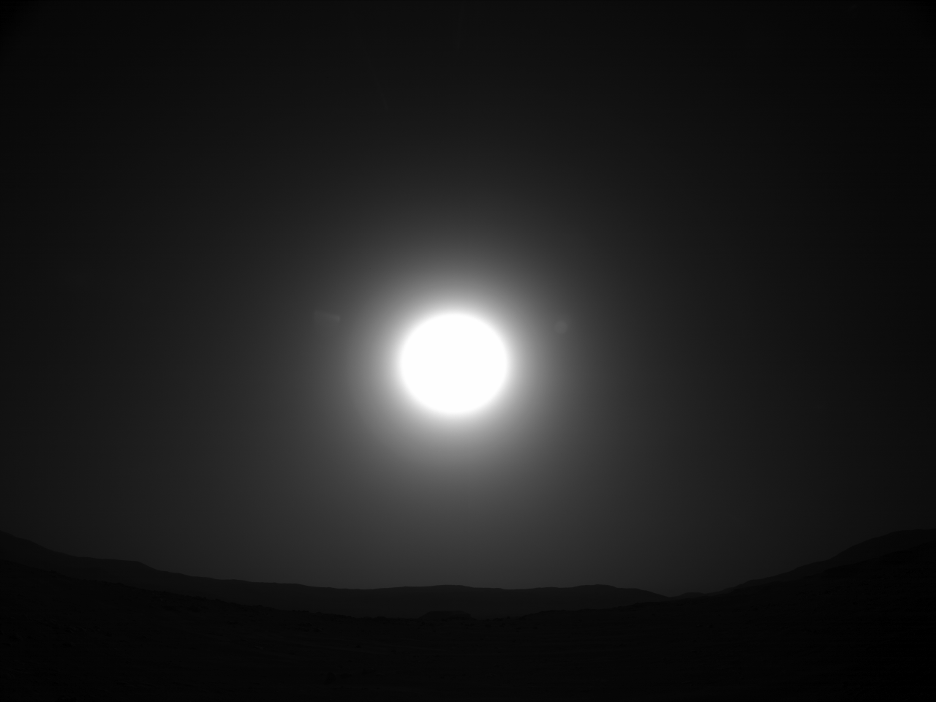
The team at the Jet Propulsion Laboratory that builds the Martian rovers didn’t feel the need to drastically alter the types of engineering cameras on Perseverance. Instead, they just made them better. These include the driving cameras, the Hazard Avoidance cameras (Hazcams), and Navigation cameras (Navcams).
The driving cameras provide a clearer view of the environment and a wider field-of-view than the same cameras on Curiosity and allow the human operators on Earth to drive the rover more precisely. They weigh less than 425 grams and have a resolution of 20 megapixels, providing an image size of 5,120 by 3,840 pixels.
The HazCams have been newly developed for Perseverance. Four are located on the front of the rover and two on the rear. They are designed to detect obstacles in the rover’s path such as large rocks, trenches and sand dunes. The HazCams are also used to help move Perseverance’s robotic arm as it . takes measurements and collects rock and soil samples.

The NavCams provide color stereo images and help the rover get where it’s going, especially when it moves autonomously (without input from human operators on Earth). The NavCams are located on the mast and can detect an object “as small as a golf ball” from 25 meters away.
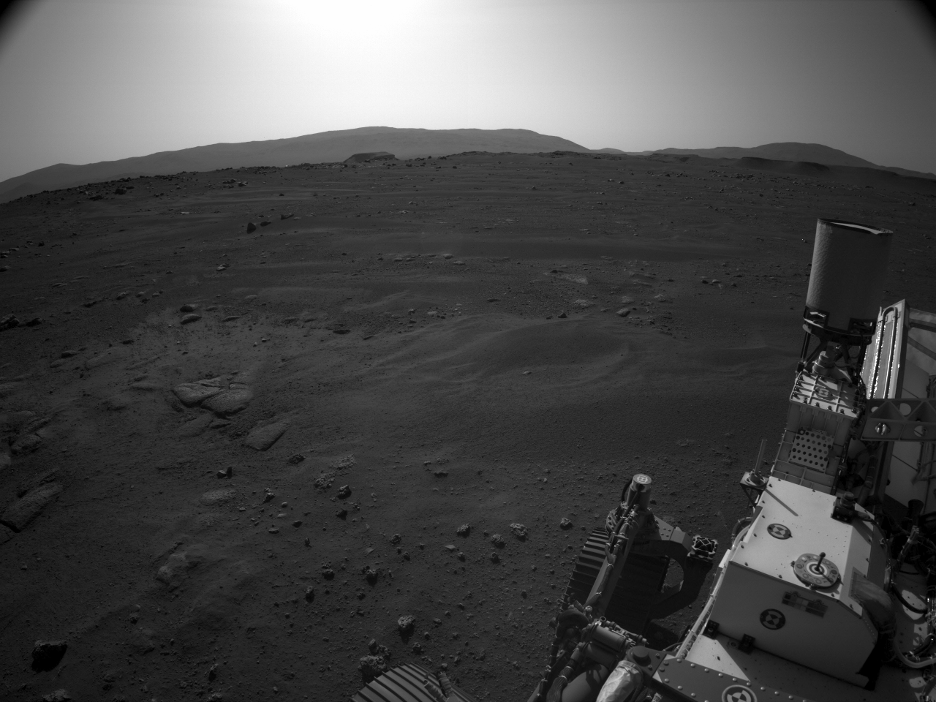
A new engineering camera has been added to Perseverance from the Curiosity’s payload. Called the “CacheCam” it is a single camera located on the rover underbelly, its job is to observe the sample tube and take microscopic pictures of dirt samples before the tube is sealed.
The Superhero Cameras of Science
The most sophisticated cameras on Perseverance are the science cameras. They have lasers, x-rays, spectrometers, wide and narrow fields-of-view and just about everything else that a planetary scientist would want on a robot on an alien world.
The science cameras include:
SuperCam: a remote micro-imager located on the head of the rover’s mast, it is the evolution of the “ChemCam” on Curiosity. It is used to identify the chemical composition of rocks and soils, including atomic and molecular makeup. It does this by firing a laser at mineral targets that are within reach of the rover’s robotic arm, and then analyzes the vaporized rock chemistry with cameras and spectrometers. Its primary purpose is to look for organic compounds of past life on Mars.
MastCam-Z: a pair of cameras that take color images and video, and three-dimensional stereo images. MastCam-Z has a powerful zoom lens. Located, of course, on the mast, the Mastcam-Z is two duplicate camera systems that are next to each other and point in the same direction.
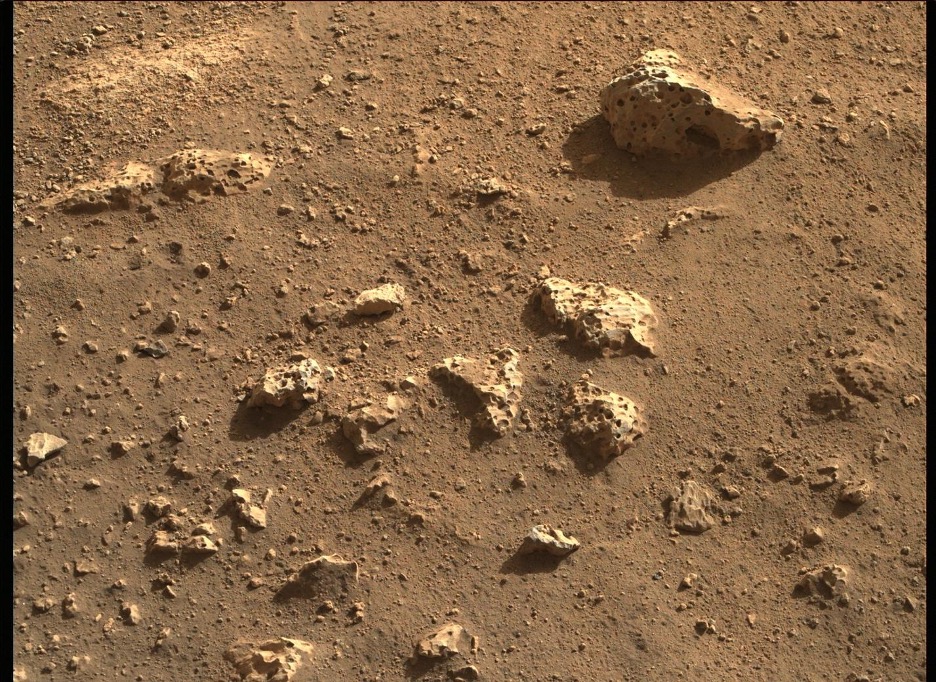
SHERLOC Context Imager: The Scanning Habitable Environments with Raman & Luminescence for Organics & Chemicals (or SHERLOC) is mounted on Perseverance’s arm. It also has a laser, along with cameras and a spectrometer. Its purpose is the fine-scale detection of minerals, organic molecules and potential biosignatures in samples that may have been altered by watery environments long, long ago. SHERLOC’s has a black-and-white context camera, with a very small field of view (2.3 by 1.5 centimeters for imaging, and 7 by 7 millimeters for spectroscopy). SHERLOC’s laser has a spatial resolution of 100 micrometers while its autofocus and context imager camera registers at 10.1 micrometers.
WATSON: As in fiction, as in life. WATSON is the assistant camera system to SHERLOC. Located on the turret at the end of Perseverance’s arm, WATSON (Wide Angle Topographic Sensor for Operations and eNgineering), “captures the images that bridge the scale from the very detailed images and maps that SHERLOC collects of Martian minerals and organics to the broader scales that SuperCam and Mastcam-Z observe from the mast.” Whereas SHERLOC’s camera is black and white, WATSON can provide context with color while assisting other instruments on the rover, including observing the functionality of MOXIE as it attempts to make oxygen. It has a spatial resolution of 15.9 micrometers. WATSON is almost identical to the MAHLI camera on the Curiosity rover.
PIXL: The Planetary Instrument for X-ray Lithochemistry uses x-ray spectroscopy to identify elements at miniature scales. Also located on the turret at the end of Perseverance’s robotic arm, PIXL has a camera that takes extreme close-up pictures of rock and soil textures. It’s primary use is to look for past microbial life within the Martian soil. Compared to the rest of the rover, the PIXL is fairly small and compact, about 4.3 kilograms and can detect 20 chemical fingerprints, even in volumes of a few parts per million.
What Teledyne is Doing on Mars
Teledyne Imaging is rolling along with Perseverance for a second tour of duty on the red planet. Teledyne instruments were important on Curiosity’s mission, and continue with Perseverance. The ChemCam on Curiosity employed a CCD42-10 sensor. On Perseverance, both SuperCam and SHERLOC are equipped with fullequipped full frame architecture CCD42-10 sensors from Teledyne e2v. Back illumination technology, in combination with an extremely low noise amplifier, make the device well-suited to the most demanding applications, including spectroscopy as performed by SuperCam and SHERLOC.
SHERLOC’s ultraviolet spectrometer is equipped with lenses and mirrors produced by Teledyne Acton Optics, part of Teledyne Princeton Instruments. These lenses and mirrors were incorporated into the Conditioning Optics Modules of the system, lenses for the Context Imager Lens Assembly, and broadband mirrors for the Spectrometer Module.
Teledyne’s DALSA’s Bromont semiconductor foundry also built the CCD image sensor for SkyCam, a tool on Perseverance that will be used to study the Martian atmosphere. The CCD was designed by NASA’s Jet Propulsion Laboratory. SkyCam is one of the radiation and dust sensor instruments that will monitor sky brightness at different times over a wavelength and geometry range to characterize dust, solar radiation and thermal radiation.
Perseverance’s power system, the Multi-Mission Radioisotope Thermoelectric Generator, power system was designed in part by Teledyne Energy Systems.
Perseverance is Equipped to Find Life
Perseverance has everything it could possibly need to find evidence of past life on Mars. Supercam, SHERLOC, WATSON, and PIXL are all designed to find life at the smallest sizes. Perseverance is also perfectly located in Jezero Crater, which was likely an ancient lakebed with a river delta system. Where there is water, there is often life. And Perseverance is where the water used to be on Mars.
Perseverance is more than just an ancient microbial detective though. Unlike Curiosity or the rovers, landers and orbiters that came before, Perseverance isn’t just looking at Martian history. With MOXIE, it is studying how to make oxygen on the surface of Mars. It won’t be enough for humans to breath, but it could help launch a rocket back to Earth in the future. On that rocket will be the soil collected from the rover’s drill tools and sampling system, aided and by the sophisticated science cameras.



 Looking at Mars With the Right Kind of Eyes
Looking at Mars With the Right Kind of Eyes  Perseverance Looks For Past Life on Mars, and Prepares for the Future
Perseverance Looks For Past Life on Mars, and Prepares for the Future 